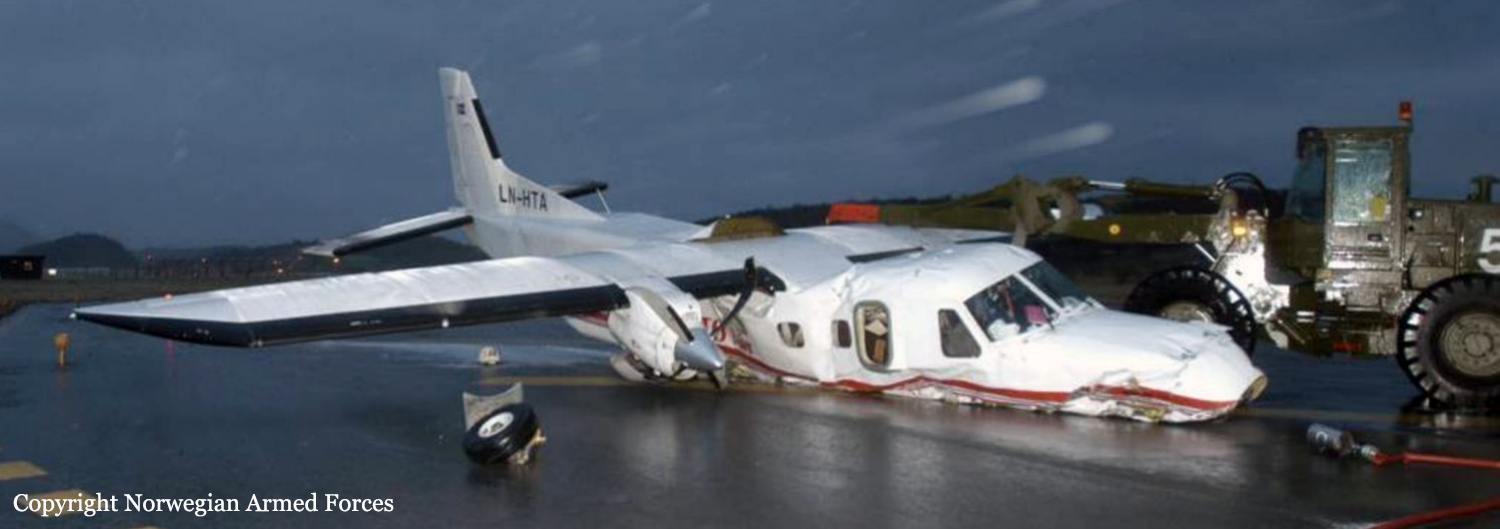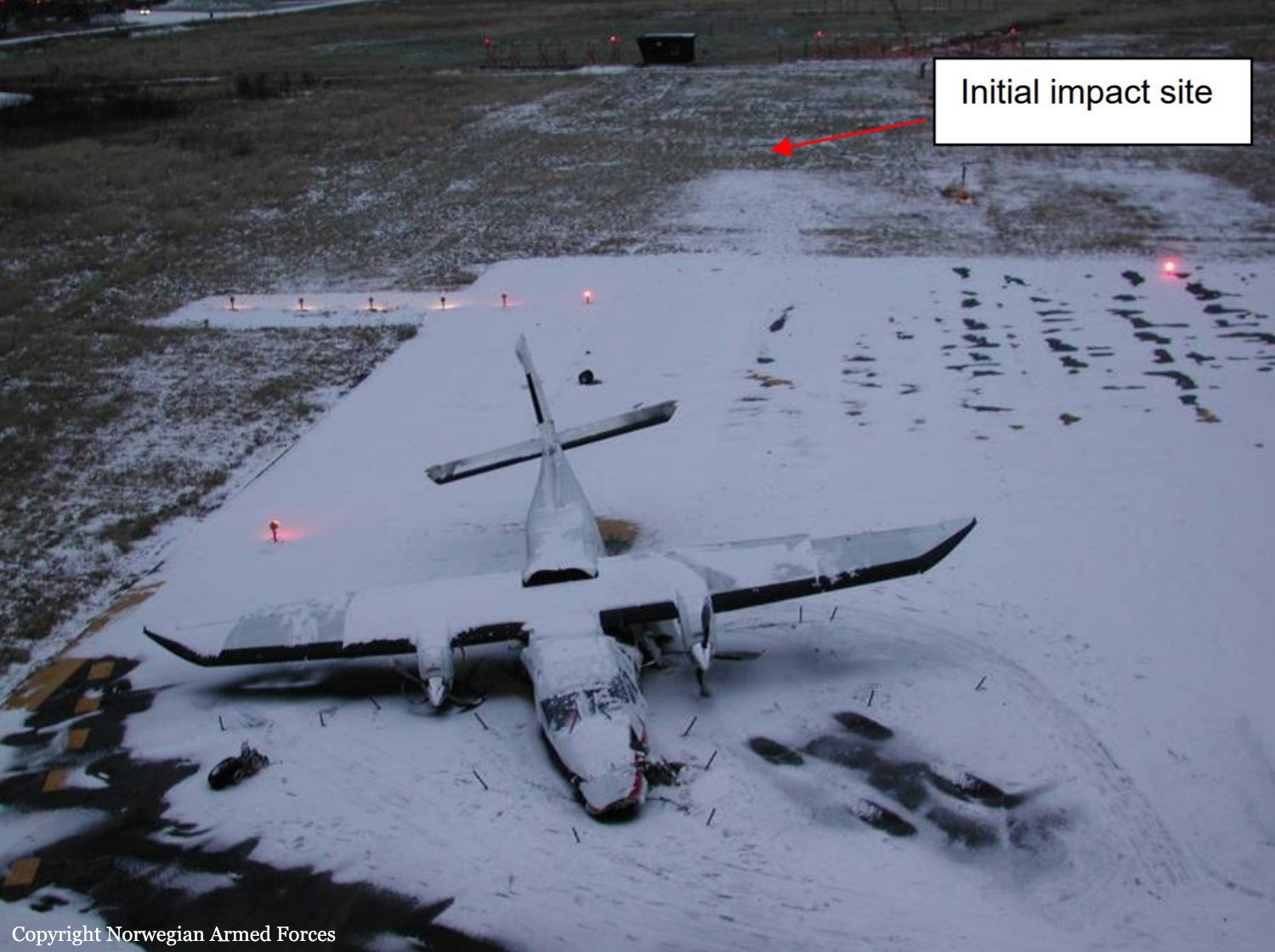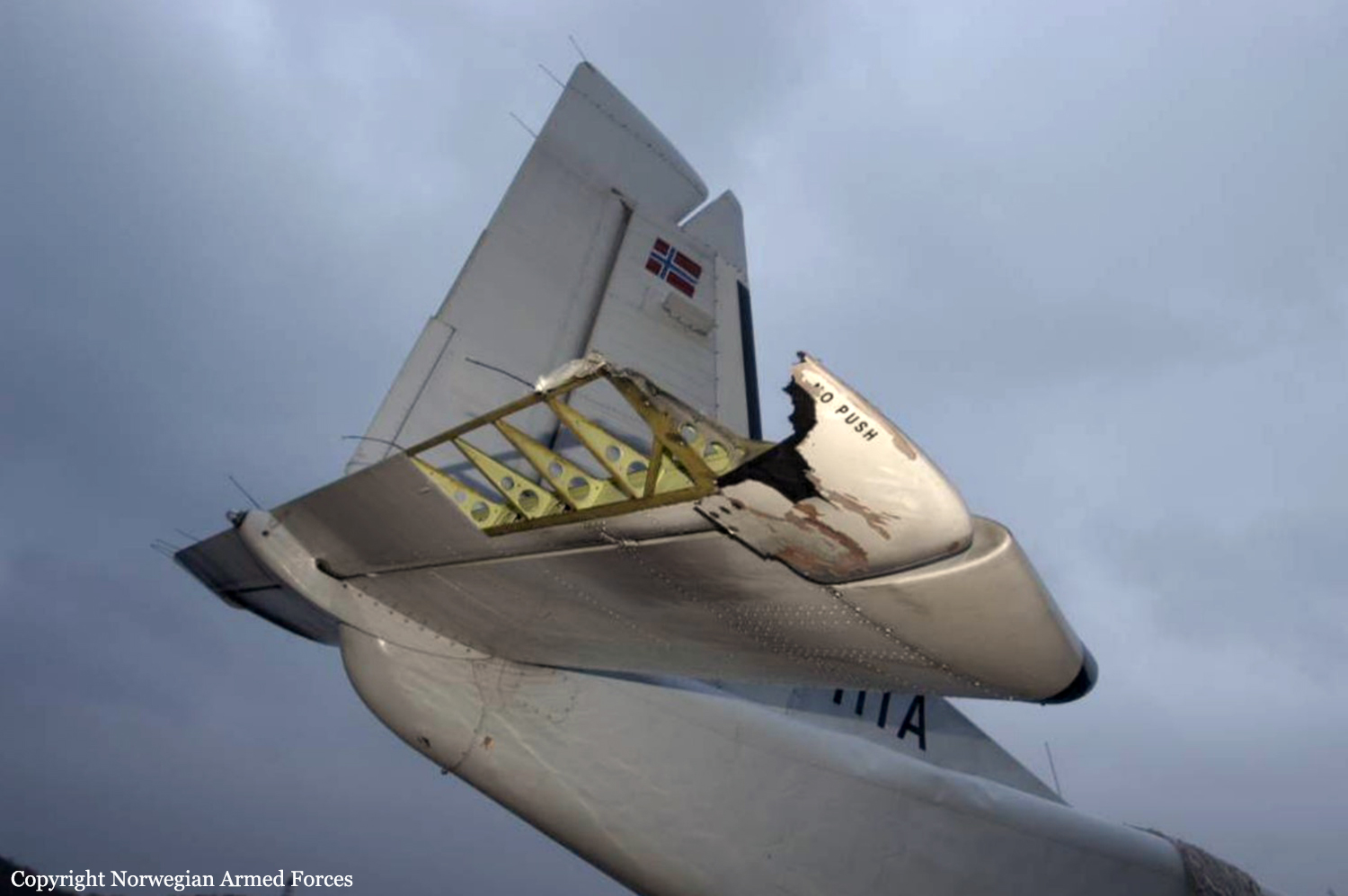Country
Crash of a Dornier DO228-212 in Vande Ikya: 13 killed
Date & Time:
Sep 17, 2006
Registration:
NAF033
Survivors:
Yes
Schedule:
Abuja - Obudu
MSN:
8229
YOM:
1994
Crew on board:
3
Crew fatalities:
Pax on board:
15
Pax fatalities:
Other fatalities:
Total fatalities:
13
Circumstances:
The twin engine aircraft departed Abuja on a flight to Obudu, carrying 15 passengers and a crew of three. The pilots started the descent in poor weather conditions when the aircraft impacted hilly terrain near Vande Ikya, about 29 km northwest of Obudu. Five occupants were injured while 13 others were killed, among them several high ranking officers who were flying to Obudu to proceed to an inspection of the military equipments. At the time of the accident, the visibility was poor due to low ceiling.
Probable cause:
Controlled flight into terrain after the crew initiated the descent prematurely, causing the aircraft to descend below the minimum prescribed altitude.

Crash of a Dornier DO228-201 in Lukla
Date & Time:
Jun 30, 2005 at 0735 LT
Registration:
9N-AEO
Survivors:
Yes
Schedule:
Kathmandu - Lukla
MSN:
8010
YOM:
1983
Crew on board:
2
Crew fatalities:
Pax on board:
10
Pax fatalities:
Other fatalities:
Total fatalities:
0
Circumstances:
After landing at Lukla-Tenzing-Hillary Airport, the twin engine aircraft skidded then veered off runway and came to rest in a dirt ground. All 12 occupants escaped uninjured while the aircraft was damaged beyond repair.


Crash of a Dornier DO228-201 at Rothera Station
Date & Time:
Jan 25, 2005 at 1433 LT
Registration:
D-CICE
Survivors:
Yes
Schedule:
Halley - Rothera
MSN:
7073
YOM:
1985
Crew on board:
0
Crew fatalities:
Pax on board:
0
Pax fatalities:
Other fatalities:
Total fatalities:
0
Circumstances:
The aircraft christened 'Polar 4' was completing a flight from Halley to Rothera Station. Following a steep approach in marginal weather conditions with low clouds and snow falls, the aircraft landed hard and suffered substantial damages. There were no injuries but the aircraft was later transferred to Germany and declared damaged beyond repair in November 2005.
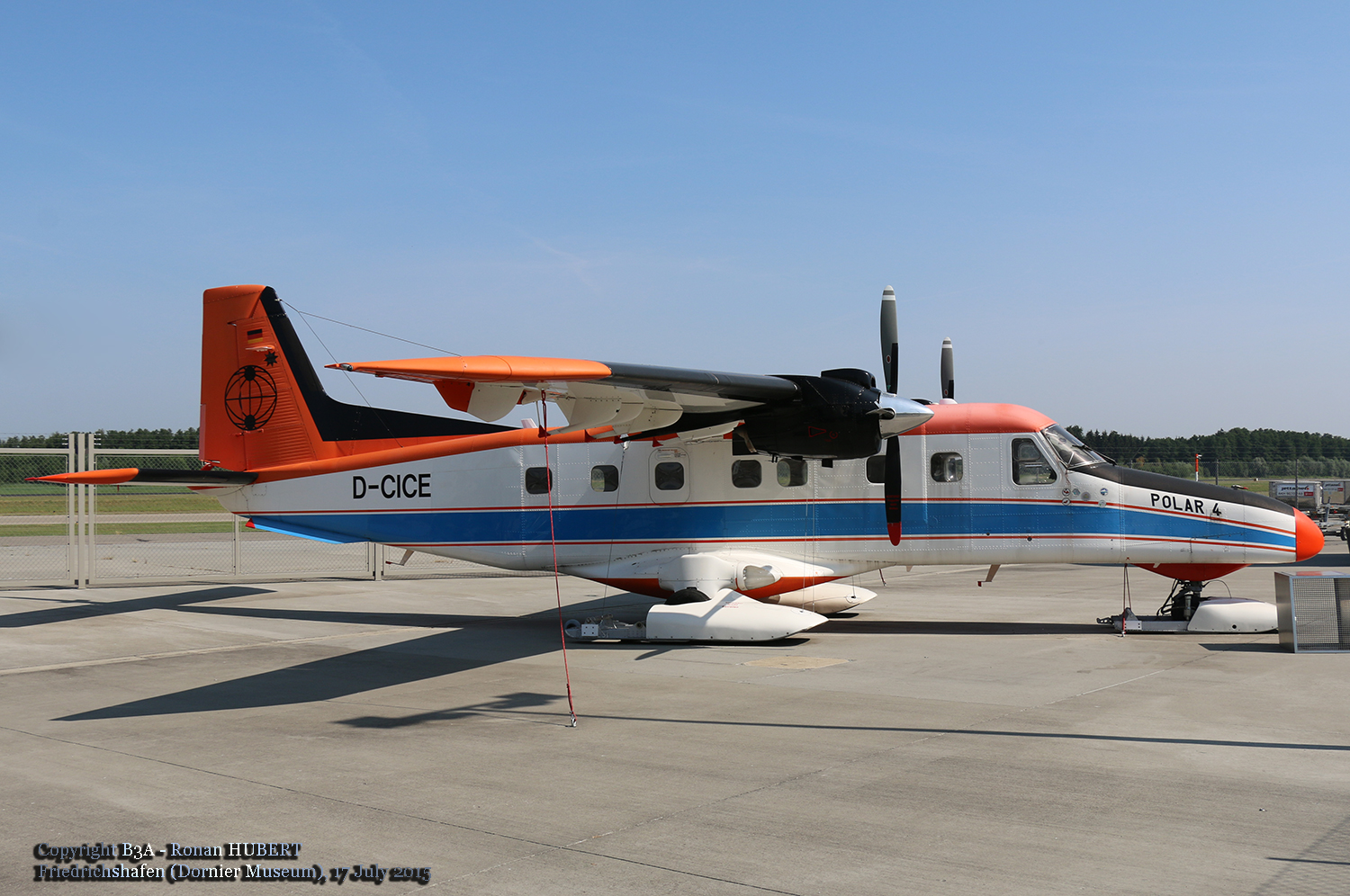
Crash of a Dornier DO228-201 in Siglufjörður
Date & Time:
Jun 23, 2004 at 1941 LT
Registration:
TF-ELH
Survivors:
Yes
Schedule:
Sauðárkrókur - Siglufjörður
MSN:
8070
YOM:
1985
Crew on board:
2
Crew fatalities:
Pax on board:
0
Pax fatalities:
Other fatalities:
Total fatalities:
0
Captain / Total hours on type:
2345.00
Copilot / Total hours on type:
253
Circumstances:
Following an uneventful passenger flight from Reykjavik to Sauðárkrókur, the crew decided to fly to Siglufjörður Airport to perform a competence control flight for this airfield. On approach in good weather conditions (visibility over 10 km with clouds at 1,500 feet), the captain disconnected the GPWS system to avoid repetitive alarms. After landing on runway 07, he attended to perform a touch-and-go so he increased engine power and took off. During initial climb, the landing gears were raised and the crew made a right hand turn circuit at an altitude of 500 feet. Following a second approach to runway 07, the aircraft landed on its belly and slid for 280 metres before coming to rest. Both pilots evacuated safely while the aircraft was damaged beyond repair.
Probable cause:
Belly landing after the crew failed to follow the approach checklist and failed to lower the landing gear for a second touch-and-go manoeuvre. The following contributing factors were identified:
- The crew failed to check that the three green lights were ON,
- The aircraft was unstable on final approach,
- The captain took over control without knowing how to proceed for the approach,
- The presence of birds in the vicinity of the runway disturbed the crew,
- The landing gear alert system was not properly set,
- The right hand circuit was completed at a low altitude of 500 feet.
- The crew failed to check that the three green lights were ON,
- The aircraft was unstable on final approach,
- The captain took over control without knowing how to proceed for the approach,
- The presence of birds in the vicinity of the runway disturbed the crew,
- The landing gear alert system was not properly set,
- The right hand circuit was completed at a low altitude of 500 feet.
Final Report:
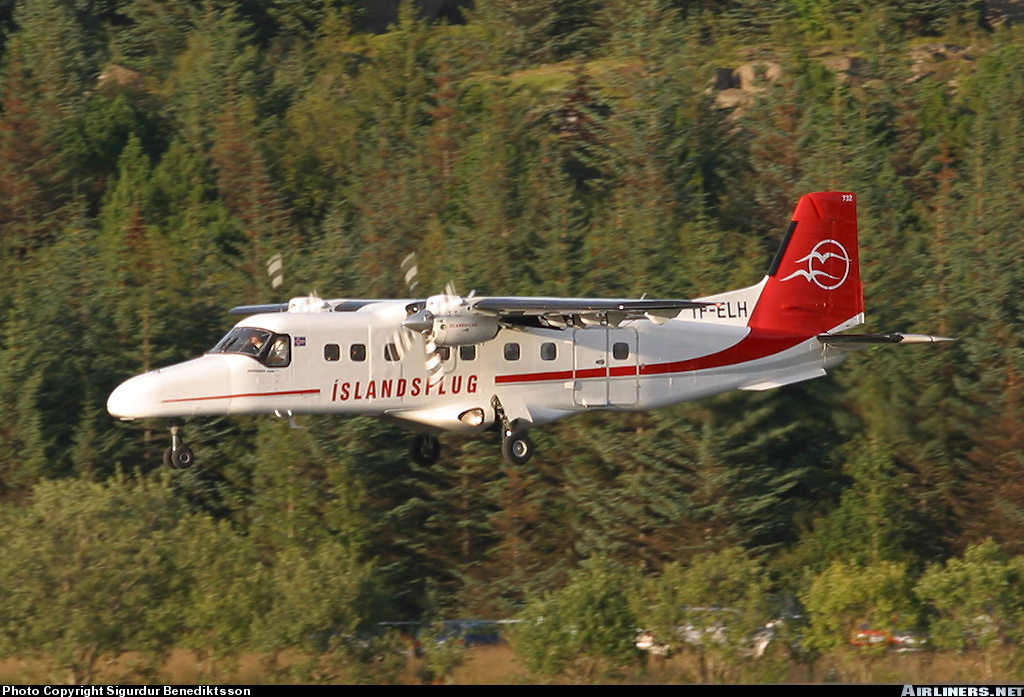
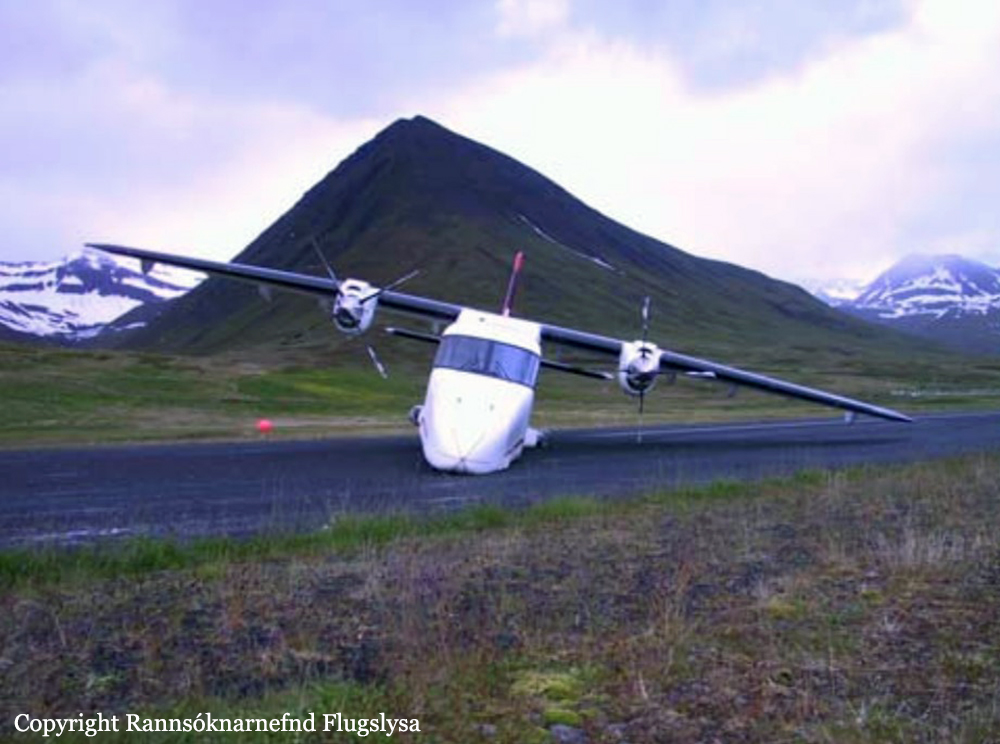
Crash of a Dornier DO228-202 in Bodø
Date & Time:
Dec 4, 2003 at 0909 LT
Registration:
LN-HTA
Survivors:
Yes
Schedule:
Røst – Bodø
MSN:
8127
YOM:
1987
Flight number:
KAT603
Crew on board:
2
Crew fatalities:
Pax on board:
2
Pax fatalities:
Other fatalities:
Total fatalities:
0
Captain / Total hours on type:
700.00
Copilot / Total hours on type:
260
Aircraft flight hours:
11069
Circumstances:
Kato Airline flight KAT603, an aircraft of the type Dornier 228-202 with registration LN-HTA, was to fly a regular scheduled flight from Røst airport (ENRS) to Bodø airport (ENBO). There were two passengers and two pilots on board. There was a strong westerly wind, and when the plane approached Bodø extensive lightning activity developed quickly. The aircraft was struck by a very powerful lightning. The lightning struck the aircraft’s nose area and passed to the tail. Boundings between the fuselage and tail surface and a wire between the tail surface and the elevator were burned off. A powerful electric energy passed through the elevator rod in the tail section. A rod end came loose, resulting in a breach in the control rod. Thus the only connection between the control column in the cockpit and the elevator was lost. This aircraft type has electric pitch trim which adjusts the tail surface angle of attack and after a period the pilots regained limited control of the aircraft’s nose position by using this. When the lightning struck the aircraft, the pilots were blinded for approximately 30 seconds. They lost control of the aircraft for a period and the aircraft came very close to stalling. The pilots declared an emergency. The aircraft’s remaining systems were intact and the pilots succeeded in bringing the plane in for landing. During the first landing attempt the airspeed was somewhat high. The aircraft hit the ground in an approximate three-point position and bounced into the air. The pilots concluded that the landing was uncontrollable because the elevator was not working. The landing was aborted and the aircraft circled for a new attempt. Wind conditions were difficult and the next attempt was also unstable in terms of height and speed. At short final the aircraft nosed down and the pilots barely managed to flare a little before the aircraft hit the ground. The point of impact was a few metres before the runway and the aircraft slid onto the runway. Emergency services quickly arrived at the scene. The two pilots were seriously injured while both passengers suffered only minor physical injuries. No fuel leakage or fire occurred. The aircraft was written off.
Probable cause:
Significant investigation results:
a) The air traffic control service did not have equipment for integrated weather presentation on the radar display.
b) The aircraft’s weather radar did not indicate precipitation cells and was therefore not functioning correctly.
c) Up to 30% of the wires on individual bondings between the fuselage, horizontal stabilizer and elevator may have been broken before the lightning struck.
d) The aircraft was hit by lightning containing a very large amount of energy. The aircraft’s bondings were not able to conduct the electric energy from the lightning and the transfer rod from the cockpit to the elevator was broken.
e) As a result of the reduced control of the aircraft’s pitch and difficult wind conditions, the sink rate was not sufficiently stabilized on short final. The crew were unable to prevent the aircraft from hitting the ground.
a) The air traffic control service did not have equipment for integrated weather presentation on the radar display.
b) The aircraft’s weather radar did not indicate precipitation cells and was therefore not functioning correctly.
c) Up to 30% of the wires on individual bondings between the fuselage, horizontal stabilizer and elevator may have been broken before the lightning struck.
d) The aircraft was hit by lightning containing a very large amount of energy. The aircraft’s bondings were not able to conduct the electric energy from the lightning and the transfer rod from the cockpit to the elevator was broken.
e) As a result of the reduced control of the aircraft’s pitch and difficult wind conditions, the sink rate was not sufficiently stabilized on short final. The crew were unable to prevent the aircraft from hitting the ground.
Final Report:

